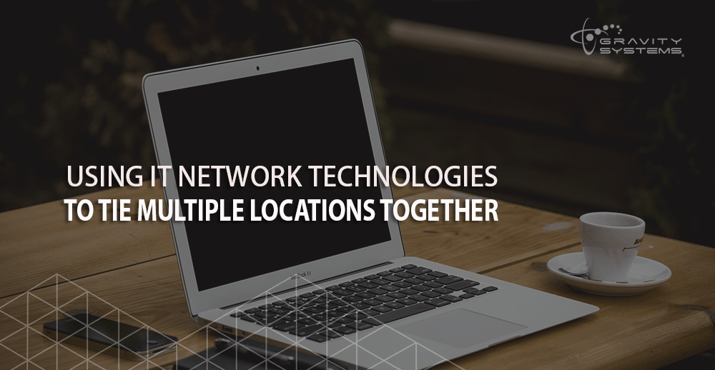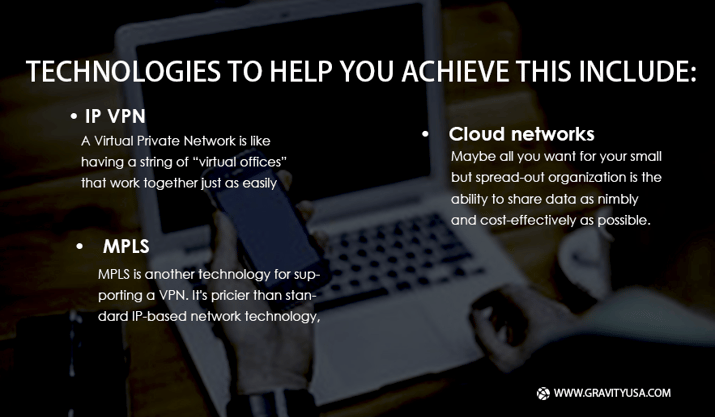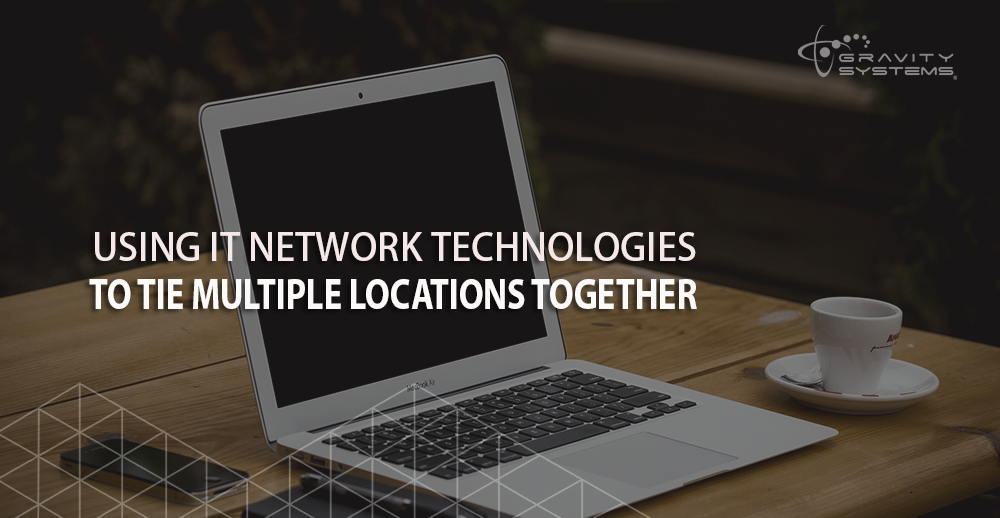
Growth and expansion are coveted goals for many businesses, but the realities of communicating and sharing data across multiple locations can make you wonder what in the world you were thinking when you opened those new branches. Fortunately, modern networking technologies make it easier than ever to keep all your locations working as a team.
The most important element in coordinating your various branches' IT is making sure everyone is reading off the same page, so to speak (or the same pixels, anyway). This means centralizing the data for everyone's use while also facilitating effortless, real-time file sharing and collaboration among employees at various sites. Technologies to help you achieve this include:
- IP VPN – A Virtual Private Network is like having a string of “virtual offices” that work together just as easily when they're a thousand miles apart as if they were just down the hall from each other. This form of network uses standard IP (Internet Protocol) packet-switching, so as long you have a working Internet connection, you can have a VPN.
- MPLS – MPLS is another technology for supporting a VPN. It's pricier than standard IP-based network technology, but it also offers the potential for a more robust signal because it's a dedicated connection instead of sharing the line with tons of other users. If you intend to make heavy use of video communications, for example, MPLS is a smart choice.

- Cloud networks – Maybe all you want for your small but spread-out organization is the ability to share data as nimbly and cost-effectively as possible. If that's the case, look to the clouds – in the form of cloud computing. Our Austin managed services team can help you and your branch associates work together via our cloud-based remote server technology.
Get those branches connected today – with the aid of Gravity Systems!
Related Post: Summer Storms and Your Computers

_NO_BCS_bigger_weird_green_clear.png?width=100&name=for-website_large(save-at-500-tall)_NO_BCS_bigger_weird_green_clear.png)


